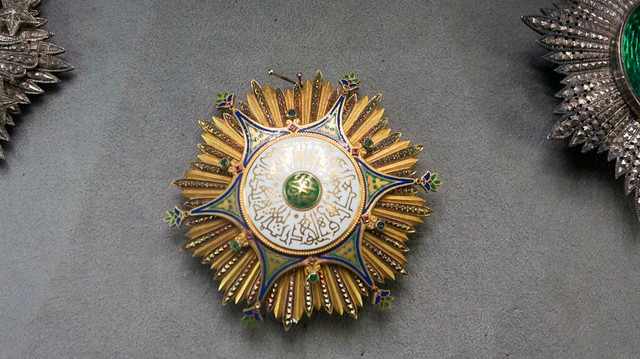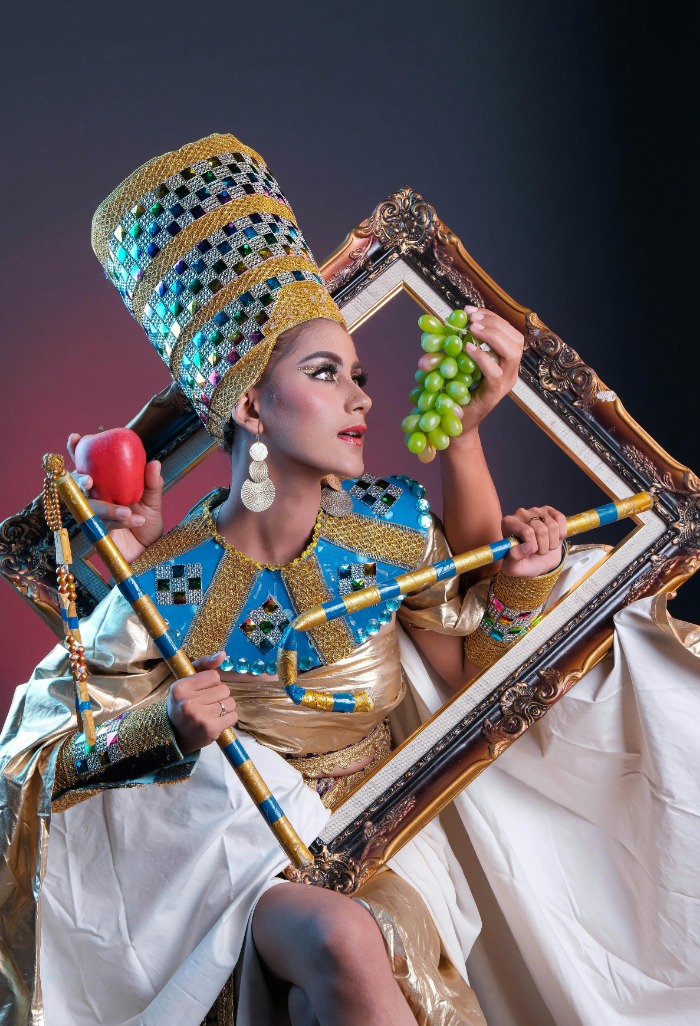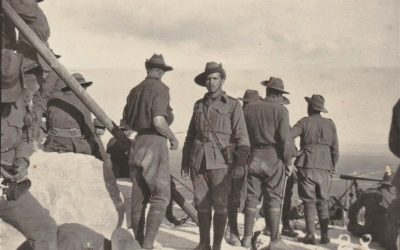Clothing and Textiles in Ancient Egypt
Ancient Egyptian fashion was characterized by its distinct clothing and textiles that reflected social status, climate, and cultural values. Linen, made from flax, was the predominant fabric due to Egypt’s hot desert climate, and it was used to create a variety of garments for both men and women. Intricate designs, jewelry, and adornments complemented the clothing, showcasing the craftsmanship and aesthetic sensibilities of ancient Egyptian society. Clothing played a vital role in expressing identity, religious beliefs, and social hierarchy in this remarkable civilization.
Materials Used in Ancient Egyptian Garments
Ancient Egyptian fashion was notable for its distinctive clothing and textiles, which reflected social status, profession, and climate. The garments were primarily made from natural materials such as linen and wool, with linen being the most common due to the hot, dry Egyptian environment. Linen was produced from the flax plant, which was cultivated along the Nile. Its lightweight and breathable qualities made it ideal for clothing in Egypt’s warm climate, and it could be woven into various textures and qualities ranging from coarse to finely woven, luxury fabrics. Wool was less commonly used because of Egypt’s arid conditions but was sometimes imported or used during cooler seasons. Decorative and functional textiles also featured dyes derived from natural sources like indigo, madder, and henna to add color and pattern to clothing. Overall, the materials used in ancient Egyptian clothing played a significant role in expressing social hierarchy and cultural identity, with more luxurious fabrics reserved for royalty and the wealthy.
Types of Fabrics and Their Significance
Clothing and textiles played a vital role in ancient Egyptian fashion, reflecting social status, occupation, and cultural values. The Egyptians highly valued their fabrics, which were made from natural materials such as flax, wool, and linen. Linen was the most prominent fabric, prized for its lightness, breathability, and association with cleanliness and purity. Wealthier individuals often wore finer, unbleached linen, while those of lower status used coarser varieties. Wool, imported from Mesopotamia, was used less frequently due to the hot climate but still held some importance, especially in colder regions or seasons.
The types of fabrics in ancient Egypt were not only practical but also held symbolic significance. White linen was associated with purity, rituals, and the divine, often used in priestly and monarchic attire. Colored and decorated textiles, including those woven with intricate patterns or embroidered with gold and colored threads, signified wealth and high social standing. These fabrics were used to adorn elaborate clothing, jewelry, and funerary shrouds, emphasizing their importance in both everyday life and spiritual practices.
The significance of textiles extended beyond mere clothing; they were considered a reflection of status, spirituality, and identity. The quality and decoration of fabric indicated a person’s rank and social position, with the finest textiles reserved for royalty, gods, and high officials. The Egyptians’ mastery of textile production and their symbolic use of fabrics reveal a sophisticated culture that appreciated beauty, craftsmanship, and spiritual symbolism in their attire.
Techniques for Weaving and Dyeing
Ancient Egyptian fashion was characterized by intricate clothing and vibrant textiles, reflecting their social status and cultural identity. The techniques for weaving and dyeing played a vital role in producing the luxurious fabrics worn by both royalty and commoners. Egyptians primarily used flax to create linen, which was a lightweight, breathable fabric ideal for the hot climate. Weaving was accomplished on simple looms, where skilled artisans spun fibers into threads and interlaced them to form fabric. Dyeing was an elaborate process that involved natural resources such as plants, minerals, and insects. For example, the deep blue color known as “true blue” was derived from the mineral lapis lazuli, while red hues came from madder root or iron oxides. The dyeing process required careful treatment of the fibers and often involved multiple immersion steps to achieve rich, lasting colors. These textile techniques not only produced beautiful clothing but also demonstrated the advanced craftsmanship of ancient Egyptian artisans, whose work influenced fashion throughout the ancient world.
Men’s Fashion in Ancient Egypt
Ancient Egyptian men’s fashion was a reflection of their social status, occupation, and cultural values. They valued simplicity and practicality, often opting for garments made from linen due to its lightweight and breathable properties. Styles ranged from simple loincloths to elaborate kilts and robes, adorned with jewelry and accessories that signified wealth and power. Clothing and adornments played an important role in daily life and ceremonial occasions, showcasing the rich artistic heritage of ancient Egypt.
Typical Male Attire and Adornments
Men’s fashion in ancient Egypt was characterized by simplicity and functionality, yet it also reflected social status and cultural values. Typical male attire consisted mainly of linen garments, which were suitable for the hot climate. Men often wore a kilt or loincloth called a “shendyt,” a square piece of linen wrapped around the waist and secured with a belt. For more formal occasions or higher social classes, men would wear longer, pleated kilts that extended below the knees and were sometimes decorated with intricate patterns or pleats.
Adornments played a significant role in illustrating social rank and personal identity. Men commonly wore accessories such as broad collars, necklaces, and bracelets made from materials like gold, semi-precious stones, and faience. Headwear was typically a simple nemes headdress, a striped cloth worn by pharaohs and nobles, or a simple headband. Footwear was minimal, with some men sporting sandals made from palm or papyrus fibers, especially during travel or outdoor activities. Overall, ancient Egyptian men’s fashion combined practicality with symbols of power and prestige through the use of luxurious adornments.
Accessories and Symbolic Jewelry
Men’s fashion in ancient Egypt was characterized by simplicity yet elegance, often reflecting social status and religious beliefs. Linen was the primary fabric used due to its availability and suitability in the hot climate. Men commonly wore kilts or skirts called shendyt, which varied in length and ornamentation depending on their rank. Accessories played a significant role in emphasizing status and identity, with men frequently adorned with jewelry and amulets.
Jewelry and accessories held symbolic meanings and were believed to offer protection or bring good fortune. Men wore broad collars, amulets, and rings made from gold, semi-precious stones, and faience. Symbolic jewelry often featured motifs such as eyes, scarabs, and gods, aligning with spiritual beliefs and the desire for divine protection. Integral to ancient Egyptian fashion, these adornments not only complemented their attire but also conveyed messages of power, piety, and social standing.
Grooming and Hairstyles for Men
Ancient Egyptian men’s fashion was characterized by its simplicity and elegance, reflecting the society’s focus on order and divine authority. Men typically wore linen garments, which were lightweight and suitable for the hot climate. The most common attire was a knee-length skirt called a “shendyt,” often pleated and sometimes decorated with jewelry or decorative borders. Wealthier men adorned themselves with accessories such as broad collars, waistbands, and amulets, showcasing status and wealth.
Grooming and hairstyles played a vital role in ancient Egyptian men’s appearance. Men maintained a well-groomed appearance, often shaping their beards and hair meticulously. Beards were sometimes artificial, made from wool, and could be styled in various ways, signifying rank or religious affiliation. Short haircuts were common, especially among laborers and soldiers, while upper-class men often sported curled or elaborately styled hair, sometimes using wigs made from human hair or sheep’s wool. Both grooming and fashion choices underscored a man’s social standing and adherence to cultural norms in ancient Egypt.
Women’s Fashion in Ancient Egypt
Women’s fashion in ancient Egypt was a reflection of their social status, wealth, and cultural values. Elaborate jewelry, fine linen garments, and intricate adornments highlighted their beauty and status, while both everyday wear and ceremonial attire showcased craftsmanship and elegance. Clothing styles evolved over time, yet they consistently emphasized grace, modesty, and the natural beauty of women in ancient Egyptian society.
Common Female Garments and Styles
Women’s fashion in ancient Egypt was characterized by elegant and practical garments that reflected their social status, climate, and cultural values. The fabric choices primarily included linen, which was lightweight and breathable, ideal for the hot Egyptian climate. Women commonly wore simple yet stylish dresses that often featured a sheath or fitted style, emphasizing a slender silhouette. These dresses ranged from basic, functional clothing for everyday wear to more elaborate attire adorned with jewelry and decorative details for special occasions.
Basic female garments typically consisted of a straight, ankle-length linen dress called a kalasiris, which could be strapless or have shoulder straps. Women sometimes layered their clothing, adding transparent or embroidered overlays. Accessories such as broad collars, necklaces, bracelets, and headbands were essential elements that complemented their outfits and signified their social standing. Make-up, especially eye eyeliner (kohl), was also an important part of women’s fashion, not only for aesthetic purposes but also for protection against the sun and dust.
In addition to dresses, women occasionally wore skirts or shorter tunics, especially in warmer weather or during work activities. Wealthier women had garments decorated with intricate patterns, beading, and dyed in rich colors, showcasing their status and wealth. Overall, women’s fashion in ancient Egypt was a blend of functionality, beauty, and social symbolism, with clothing and accessories playing key roles in expressing identity and cultural values.
Jewelry and Personal Adornments
Women’s fashion in ancient Egypt was characterized by a rich emphasis on elegance, symbolism, and social status, reflecting the civilization’s artistic and cultural values. Clothing was typically made from linen, which was lightweight and suitable for Egypt’s hot climate, and styles evolved over time to include various draped garments and adornments that highlighted femininity and authority.
Jewelry and personal adornments played a vital role in ancient Egyptian fashion, serving both decorative and symbolic purposes. Women often wore elaborate jewelry to signify their social standing and to invoke protection from divine powers. The designs incorporated motifs like scarabs, lotus flowers, and hieroglyphs, demonstrating their spiritual significance and aesthetic beauty.
- Worn jewelry included broad collars, bracelets, anklets, rings, and earrings, often crafted from gold, faience, and semi-precious stones.
- Makeup, such as kohl-lined eyes and colorful eye shadows, complemented their look and was believed to offer protection from evil spirits and the sun’s glare.
- Personal adornments also involved headpieces, wigs, and hair accessories that emphasized height and elegance.
- Scarves and sashes were used to add layers and sophistication to their outfits, often decorated with beads and embroidery.
- Amulets and charms were commonly worn as protective talismans, embodying spiritual beliefs and good fortune.
Hairstyles and Makeup for Women
Women’s fashion in ancient Egypt was characterized by elegant and sophisticated styles that highlighted their status and beauty. They often wore long, flowing garments made from linen, which was a preferred material due to its lightness and breathability. These dresses were typically sleeveless or had thin straps, emphasizing a sleek silhouette. Accessories such as jewelry, collars, and belts were commonly added to enhance the overall appearance and denote social standing. Women also adorned themselves with intricate hairstyles and striking makeup to complete their look.
Hairstyles for women in ancient Egypt varied depending on social class and occasion. Wealthier women often wore elaborate wigs made from human hair or wool, styled in intricate braids, loops, or coils. These wigs served both as fashion statements and symbols of status, sometimes decorated with beads, ribbons, or artificial hairpieces. For everyday wear, women might have simply styled their natural hair into simple braids or buns, tied with decorative bands or cords.

Makeup was an essential aspect of ancient Egyptian women’s beauty routines and carried both aesthetic and protective significance. Women commonly applied green malachite and black kohl made from galena around their eyes, creating bold, elongated shapes that reduced glare and warded off evil spirits. Their lips and cheeks were often tinted with red ochre or other natural pigments to add color and vibrancy. This combination of fashion, hairstyle, and makeup reflected the Egyptian ideals of beauty and conveyed social identity and personal style.
Royal and Noble Clothing
Royal and noble clothing in ancient Egypt was a symbol of status, power, and divine connection. Distinguished by intricate designs, luxurious materials, and elaborate accessories, the attire of Egypt’s elite reflected their position in society and their closeness to the gods. Lavish garments and jewelry not only showcased wealth but also held cultural and spiritual significance, helping to distinguish the ruling class from common citizens in a society deeply rooted in symbolism and tradition.
Distinctive Features of Royal Attire
Royal and noble clothing in ancient Egypt was characterized by its opulence, intricate craftsmanship, and symbolic significance. These garments were often designed to display wealth, status, and divine authority, distinguishing the elite from common people. Luxurious fabrics such as linen, often fine and smoothly woven, were commonly used, with wealthy individuals accentuating their attire with elaborate accessories and jewelry.
Distinctive features of royal attire included elaborate headdresses, such as nemes headcloths and crowns like the Pschent or the Atef, symbolizing power and divine rulership. Jewel embellishments, including broad collars, pectorals, and elaborate scepters, were common. Clothing silhouettes varied from simple kilts for men to flowing dresses for women, often decorated with intricate embroidery, beads, and appliqué work. Colors held symbolic meanings, with gold representing the divine and eternal, while vibrant hues like blue and green signified fertility and rebirth.
Regalia and ceremonial dress
Royal and noble clothing in ancient Egypt was characterized by its opulence, symbolism, and attention to detail, reflecting social hierarchy and divine authority. Regal attire often included elaborate linen garments, adorned with intricate jewelry, gold accents, and fine beads, emphasizing wealth and power.
Regalia and ceremonial dress played a crucial role in religious and state rituals, showcasing the close connection between the monarchy and the divine. Pharaohs and high-ranking nobles frequently wore ceremonial crowns, such as the white crown of Upper Egypt and the red crown of Lower Egypt, sometimes combined into the double crown symbolizing unification. These crowns were made from precious materials and represented sovereignty and divine legitimacy.
In addition to crowns, royal and noble regalia included elaborate scepters, collars made of gold and precious stones, and ceremonial jewelry that signified their status. Their clothing was often decorated with symbolic motifs such as lotus flowers, papyrus, and sacred animals, which conveyed messages of fertility, rebirth, and divine authority. The use of fine linen, combined with embroidered or painted details, ensured that royal attire was both visually stunning and imbued with religious significance.
Overall, the fashion of ancient Egyptian royalty and nobility was not merely about aesthetics but also served as a visual language illustrating their divine right to rule and their connection to the gods, making their ceremonial dress a vital part of their cultural identity and religious practices.
Progression of royal fashion over different dynasties
Royal and noble clothing in ancient Egypt evolved significantly throughout different dynasties, reflecting changes in cultural values, political power, and craftsmanship. During the early Dynastic Period, royal attire was characterized by simple linen garments signifying purity and social status. As the Old Kingdom developed, elaborate headdresses, jewelry, and tightly fitted karchives became prominent, denoting the authority of pharaohs. The Middle Kingdom introduced more intricate patterns and accessory layers, emphasizing wealth and divine connection. The New Kingdom marked a pinnacle in royal fashion with the adoption of richly decorated robes, wide collars, and ceremonial headdresses like the nemes, symbolizing supreme rule. Throughout these periods, clothing became increasingly adorned with golden embellishments, beads, and symbols of royalty, illustrating a progression from functional garments to highly ornate symbols of divine kingship and noble status in ancient Egypt.
Footwear and Accessories
Footwear and accessories played a significant role in ancient Egyptian fashion, reflecting both social status and cultural symbolism. These items were crafted with meticulous detail and often featured intricate designs, precious materials, and meaningful motifs. They not only served practical purposes but also expressed identity, religious beliefs, and societal hierarchy in ancient Egypt.
Types of Footwear in Ancient Egypt
In ancient Egypt, footwear and accessories played a significant role in fashion and social status. The types of footwear used by Egyptians ranged from simple sandals to more elaborate styles adorned with decorative elements. Sandals were the most common type of footwear, made from materials such as papyrus, palm leaves, or leather, providing protection from the hot, sandy ground. These sandals often featured straps that wrapped around the ankles and shins, showcasing craftsmanship and artistry. Additionally, some of the nobility and elite classes wore more ornate footwear decorated with beads, gold, or precious stones to display their wealth and social standing. Accessories such as jewelry, headpieces, and scepters were also essential components of ancient Egyptian fashion, complementing footwear and clothing to create a complete look that reflected their cultural values and aesthetics. The combination of practical and decorative elements in footwear and accessories underscores the importance of appearance and symbolism in ancient Egyptian society.
Jewelry: Materials and Symbolism
In ancient Egyptian fashion, footwear and accessories played a significant role in expressing social status, cultural identity, and religious beliefs. Jewelry materials such as gold, semi-precious stones, and perishable materials like beads and shells were commonly used, each carrying symbolic meaning. Gold was associated with the sun god Ra and represented eternity, divine power, and invincibility, often used in elaborate jewelry and ceremonial regalia. Semiprecious stones like turquoise, lapis lazuli, and carnelian were believed to have protective properties and were used in amulets and adornments to ward off evil. Accessories such as collars, bracelets, and rings often featured intricate designs depicting gods, animals, and hieroglyphs, symbolizing protection, power, and spiritual connection. Footwear, usually simple sandals made from woven reeds or leather, was often reserved for the elite, with their design and material reflecting social rank. Overall, the combination of materials and symbolic motifs in ancient Egyptian jewelry and footwear highlighted both personal identity and reverence for divine forces, underpinning the cultural significance of fashion in that civilization.
Other Accessories: Scarves, Belts, and Headpieces
In ancient Egyptian fashion, footwear and accessories played a significant role in expressing social status and identity. Sandals made from papyrus or leather were commonly worn, often intricately decorated for the wealthy, showcasing craftsmanship and wealth. Among other accessories, scarves, belts, and headpieces held symbolic meanings and were crafted with detailed patterns and vibrant materials. Scarves served both functional and decorative purposes, protecting against the sun while adding to the aesthetic of royal or everyday attire. Belts, often adorned with beads or adornments, emphasized the waist and signified rank or profession. Headpieces, including crowns and elaborate headdresses, indicated nobility, divinity, or social standing, with designs influenced by religious symbolism and mythology. These accessories not only complemented garments but also conveyed cultural and spiritual messages in ancient Egyptian society.
Fashion and Symbolism
Fashion in ancient Egypt served not only as a means of personal expression but also as a powerful symbol of social status, religion, and cultural identity. Clothing, jewelry, and adornments were carefully crafted to reflect the individual’s role within society and their connection to spiritual beliefs. Exploring the fashion of ancient Egypt reveals the deep symbolism embedded in their attire, offering insight into the values and traditions of this remarkable civilization.
Color Significance in Clothing
Ancient Egyptian fashion was deeply intertwined with symbolism and the significance of colors, reflecting their beliefs, social hierarchy, and spiritual ideals. Clothing in this era was not merely functional but also conveyed meaning through specific colors and styles that held cultural importance.
Color played a crucial role in ancient Egyptian clothing, where each hue symbolized different concepts and deities. For example, white represented purity and cleanliness, often used in ceremonial robes; red symbolized chaos, energy, and life force; black was associated with fertility and the afterlife, representing the fertile soil of the Nile; green signified rebirth, fertility, and growth; and gold denoted the divine, wealth, and power, frequently used in adornments and accessories.
- White: Symbolized purity, sacredness, and cleanliness. Often worn by priests and during religious ceremonies.
- Red: Represented energy, vitality, and sometimes chaos or danger, but also the concept of life force.
- Black: Associated with fertility, agriculture, and the afterlife, symbolizing regeneration and rebirth.
- Green: Embodying growth, rebirth, and health, often used in amulets and jewelry to invoke renewal.
- Gold: The color of the gods and divine attributes, signifying power, eternity, and divine status.
Fashion in ancient Egypt also emphasized the use of specific garments and adornments to communicate rank and social status. Colors and types of clothing—such as linen garments, kilts, and intricate jewelry—served as visual indicators of one’s position in society. Overall, the interplay of fashion and symbolism in ancient Egypt reflected their cultural values, spiritual beliefs, and reverence for the divine.
Use of Hieroglyphic and Religious Symbols
Ancient Egyptian fashion was deeply intertwined with symbolism and religious significance, reflecting the spiritual beliefs and social hierarchy of the civilization. Clothing and adornments often incorporated hieroglyphic motifs and religious symbols to convey messages about identity, protection, and divine favor. Hieroglyphs, the written language of Egypt, were not only used in inscriptions but also aestheticized into jewelry, amulets, and textiles, serving both decorative and symbolic purposes. Religious symbols such as the ankh, representing life; the scarab, symbolizing rebirth; and the Eye of Horus, offering protection, were commonly displayed on clothing and accessories. Their presence in fashion underscored the importance of spirituality in daily life and reinforced the wearer’s connection to the divine realm. Overall, ancient Egyptian fashion was a unique amalgamation of artistry, symbolism, and religious expression, embodying the culture’s profound reverence for the spiritual world.
Fashion as a Status and Power Indicator
Ancient Egyptian fashion was deeply intertwined with symbolism, serving as a reflection of social status, religious beliefs, and cultural identity. Clothing and adornments such as linen garments, intricate jewelry, and elaborate wigs were not only practical but also conveyed messages about an individual’s rank and spiritual significance. The use of specific colors, materials, and styles often indicated a person’s social class, with higher-status individuals wearing finer fabrics and more ornate decorations to distinguish themselves from commoners. Fashion in ancient Egypt was thus a powerful indicator of power, authority, and spiritual devotion, reinforcing societal hierarchies and reinforcing the importance of order and divine kingship.




0 Comments